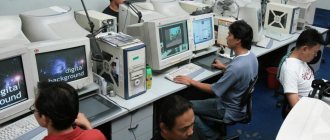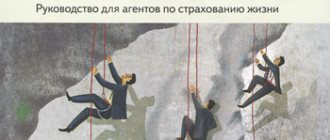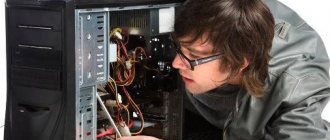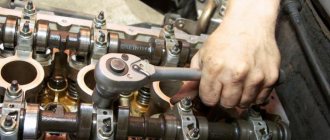Sample job description for a design engineer
Basic provisions
- The design engineer is hired and fired by the director of the company, on the recommendation of the chief engineer.
- The design engineer reports directly to the chief engineer.
- A candidate for this position must meet the following qualification requirements:
- higher or secondary specialized education in a technical field;
- English language at least at the Advanced level, taking into account industry specifics;
- 5 years of experience in similar positions.
- During the absence of an engineer, the tasks assigned to him are performed by another specialist appointed by the chief engineer.
- The design engineer must have skills in the following professional areas:
- legislation and industry standards relevant to its activities;
- standards for handling relevant technical documentation;
- parameters for planning specialized work;
- rules for working with drawings and diagrams;
- types of calculations required in design and technical activities;
- types of materials used and their features;
- criteria used to check the quality of work performed;
- rules for cooperation with colleagues in design and technical matters;
- principles of construction and operation of designed structures;
- standards for the use of special programs and equipment;
- parameters for creating projects, their analysis and verification;
- procedure and typical deadlines for completing stages of design work;
- the procedure for using applied patents and developments;
- principles of profile design and technological aesthetics;
- types of equipment and tools used in project implementation;
- basics of presentation and defense of developed projects;
- best practices in developing relevant projects in the country and the world;
- rules for obtaining certificates and permits for created projects;
- controlling rules applied in design and technical activities;
- environmental, technical and other mandatory parameters that the created project must comply with;
- standards for the expenditure of resources used in the implementation of projects;
- technical and fire safety rules.
- The design engineer uses in his work:
- relevant laws and industry regulations;
- profile documentation of the company;
- provisions of this instruction.
Functions
The design engineer is responsible for the following range of operations:
- Quality control of projects implemented in practice.
- Development of projects and technical solutions in accordance with specified parameters.
- Monitoring the testing of prototypes.
- Carrying out calculations necessary in project activities.
- Maintaining appropriate document flow.
- Examination of the quality of third-party diagrams, drawings and calculations.
- Creation of relevant technical specifications.
- Production of necessary drawings.
- Participation in the collection of data necessary for your work.
- Monitoring the development of trends in your field of activity.
- Participation in meetings with representatives of counterparties on issues of design and technical activities.
- Monitoring compliance with technical, fire, and environmental safety parameters in design solutions.
- Consulting other employees on design and technical issues.
- Monitoring the receipt of required patents, certificates, permits.
- Participation in the development of economic aspects of created projects.
- Implementation of necessary adjustments in created projects in case of changes in significant factors.
- Compliance with labor discipline, fire and technological safety standards.
- Improving your professional qualifications in accordance with the rules of the company.
- Assistance in translating technical documentation.
Responsibility
An engineer may be held liable for:
- Causing material damage to the company - to the extent specified in the relevant sections of the current legislation.
- Failure to fulfill one's official duties - in accordance with articles of labor legislation and company rules.
- Violations of laws committed in the course of performing their work - in accordance with articles of administrative, labor and civil legislation.
Rights
The engineer is endowed by the employer with the following rights:
- Receive from company employees the information necessary to perform assigned functions.
- Involve other company specialists to assist in your work, in consultation with the relevant manager.
- Propose measures to improve labor procedures in the area of its activities.
- Participate in meetings regarding design and technical issues.
- Endorse documentation in accordance with your authority.
- Require the company's management to create the conditions necessary to perform assigned duties.
Links
Wikimedia Foundation. 2010.
See what “Lead Engineer” is in other dictionaries:
- Lead Engineer
— — [A.S. Goldberg. English-Russian energy dictionary. 2006] Energy topics in general EN leading engineerLE ... Technical Translator's Guide
LEAD ENGINEER
— Job responsibilities. Under the guidance of the responsible person or topic (task) leader, participates in scientific research or scientific and technical developments. Organizes the collection, processing, analysis and systematization... ... Qualification directory of positions of managers, specialists and other employees
- (French ingénieur, from Latin ingenium ability, ingenuity) a specialist with a technical education, creator of information about the architecture of a material means of achieving a goal and its functional properties, method ... ... Wikipedia
HOST, ah, her. 1. Driven by a motor (special). Drive wheel. 2. Walking in front, leading. B. airplane. 3. Leading, chief, leading. In the Institute. V. engineer. Leading role. 4. presenter, his, husband. A person who conducts... ... Ozhegov's Explanatory Dictionary
An engineering specialty whose activity (work) is necessary for the development and creation of the final (target) product from the products and resources of existing material production. The creation of the final (target) product is understood as... Wikipedia
- [advanced] adj., used. often 1. A ship, truck, etc. is called a leader if it goes first, followed by other ships, trucks, etc. The leading vehicle in a convoy. 2. The leader is the person, phenomenon or object standing first in the row... ... Dmitriev's Explanatory Dictionary
In domestic practice, a programmer who heads one or more software development projects, or a programmer who has a certain level of training, work experience and meets the educational requirements for... ... Wikipedia
Aya, oh. 1. Walking in front; head. V. airplane, cruiser. 2. Main, main; the most important, significant. In the Institute. In this industry. In their specialists. The power of the theater. Play a leading role in project development. 3. Guiding, ... ... Encyclopedic Dictionary
leading
- oh, oh. 1) Walking ahead; head. Leading aircraft, cruiser. 2) Main, main; the most important, significant. Leading institute. In this industry. In their specialists. The power of the theater. Play a leading role in project development. 3) ... Dictionary of many expressions
Leading researcher at the All-Russian Research Institute of Metrology; born April 19, 1929 in Leningrad; studied at the Leningrad Electrotechnical Institute of Communications (1949 1950), Northwestern Correspondence Polytechnic Institute (1977 1980), candidate of technical... ... Large biographical encyclopedia
Books
- Policy-based data centers and ACI. Structure, Concepts and Methodology, Lucien Avramov, Maurizio Portolani. Use policies and Cisco T ACI to create more flexible and customizable data centers and get much more value for your business applications! Help Guide...
The job description specifies the scope of duties and work that must be performed by a person holding a certain position. The job description in accordance with the All-Russian Classifier of Management Documentation, or OKUD, OK 011-93 (approved by Gosstandart Resolution No. 299 of December 30, 1993) is classified as documentation on the organizational and regulatory regulation of the organization’s activities. The group of such documents, along with the job description, includes, in particular, internal labor regulations, regulations on the structural unit, and staffing.
What to remember when writing a document
The current legislation does not contain requirements for the parameters of the job description. Therefore, in order to avoid problems with inspectors, most companies create instructions based on standard samples, adapting them to their needs. They have the following structure:
- General section.
- Responsibilities of a specialist.
- His responsibility.
- His rights.
Large employers who seek to document as many parameters as possible in order to avoid the need for individual explanations to numerous employees include additional parts in the document:
- Working conditions.
- Official connections.
- Criteria for assessing the effectiveness of activities.
Attention! When printing instructions, it is recommended to use company letterhead. It must contain the main attributes of an official document, such as details, transcript of signatures, date of preparation, etc.
General provisions
The initial part of the document, which contains a description of the basic parameters of work activity:
- to whom does the specialist report?
- who should replace him;
- what experience and education is required from him;
- what should he be guided by;
- what is the procedure for hiring and firing him;
- what knowledge is required from him.
The key role is played by the list of skills that should ensure high-quality performance of the duties discussed in the next part.
Functions
The specific content of this section greatly depends on the specialist’s field of work. When creating it, you can focus on suitable professional standards, of which more than a dozen have been created for the design engineer: from the creation of water supply systems to urban planning.
Attention! The responsibilities listed here should not go beyond the boundaries set out in the job description in the employment contract.
Responsibility
This part provides a list of violations for which a specialist can be held accountable. This list, as well as possible methods of punishment, is given in general form, since the specifics can only be established after the completion of the relevant proceedings.
Rights
The list of specialist rights given in this part should not duplicate the list given in Art. 21 TK. It is applied as a supplement to basic rights, and its content can be significantly expanded, depending on the employer’s labor policy.
The design engineer is required to have a significant amount of specialized knowledge, as well as a willingness to apply it in practice. Therefore, for such positions that require high qualifications, instructions are created with the participation of specialized specialists. Usually it is agreed upon with a legal adviser, HR manager, and other engineers. Only after taking into account their adjustments does the document reach the head of the company. The specialist himself becomes familiar with the contents of the instructions during the employment process.
The instructions finally come into force after signatures by all parties: the director of the company, the specialist and those managers who approved the document.
Attention! The employee has the right to receive his own copy of the instructions. It can be provided to him in paper or electronic form by posting it on the company’s intranet. In the latter option, it is necessary to exclude all personal information from it.
GENERAL PROVISIONS
1.1.
An equipment operation engineer (hereinafter referred to as the Employee) is a specialist. 1.2. This job description defines the functional responsibilities, rights, duties, responsibilities, working conditions, relationships (positional connections) of the Employee, criteria for assessing his business qualities and work results when performing work in his specialty and directly at the workplace in “______________” (hereinafter referred to as the Employer ).
1.3. An employee is appointed to a position and dismissed from a position by order of the Employer in the manner prescribed by current labor legislation.
1.4. The employee reports directly to _____________________.
1.5. The employee must know:
laws and other regulatory legal acts of the Russian Federation, methodological and regulatory documents on the maintenance and repair of equipment, buildings, structures, heat, gas, water supply and sewerage systems (to the extent necessary for this position);
prospects for the technical development of the organization;
system of scheduled preventive maintenance of serviced equipment;
technical characteristics, design features, purpose and operating modes of serviced equipment, devices and structures;
emergency and operational circulars; domestic and foreign experience in the maintenance and repair of equipment, buildings, structures, heat, gas, water supply and drainage systems;
fundamentals of economics, organization of production, labor and management;
basics of labor legislation;
environmental regulations;
labor protection and fire safety regulations;
internal labor regulations.
1.6. Qualification requirements:
Category I equipment operation engineer: higher professional (technical) education and work experience as an equipment operation engineer of category II for at least 3 years.
Category II equipment operating engineer: higher professional (technical) education and work experience as an equipment operating engineer or in other positions filled by specialists with higher professional (technical) education for at least 3 years.
Equipment operation engineer: higher vocational (technical) education without requirements for work experience or secondary vocational (technical) education and work experience as a category I technician for at least 3 years or in other positions filled by specialists with secondary vocational (technical) education , at least 5 years.
FUNCTIONAL RESPONSIBILITIES
Provides technical assistance to employees of workshops (services) and energy laboratories in organizing the operation of equipment, buildings, structures, heat, gas, water supply and drainage systems.
Participates in the preparation of plans and schedules for preventive maintenance of equipment and brings them to the attention of workshops (sites).
Monitors the correct operation of equipment, heat, gas, water supply and drainage systems, takes measures to eliminate identified violations.
Participates in drawing up a plan to improve the reliability of equipment operation.
Participates in the preparation of requests for equipment, spare parts, materials, and tools.
Distributes funds and material resources allocated for the technical operation of equipment between workshops (sites), controls their correct and economical use.
Develops production instructions for equipment operation.
Monitors the staff's compliance with the requirements of production instructions, the availability of the necessary diagrams (drawings) at the workplace and the timeliness of their correction, as well as the completeness and correctness of maintenance of operational and technical documentation.
Gives conclusions on rationalization proposals and inventions related to improving the design of equipment and organizing its operation.
Participates in work on certification and rationalization of workplaces.
Summarizes and disseminates best practices in organizing equipment operation.
Participates in the work of commissions to investigate accidents and equipment failures and ensures timely registration of investigation results.
Keeps records and draws up reports and other technical documentation on accidents and equipment failures, monitors the implementation of the emergency response plan.
Participates in the acceptance of repair and installation of relevant equipment, review and approval of design assignments for the construction and reconstruction of the organization’s facilities.
Ensures the implementation of measures to prevent environmental pollution, cleaning and disinfection of industrial emissions and wastewater.
Participates in the work of the commission to test personnel’s knowledge of labor protection rules, rules for the technical operation of equipment, in the organization and conduct of emergency and fire safety training.









